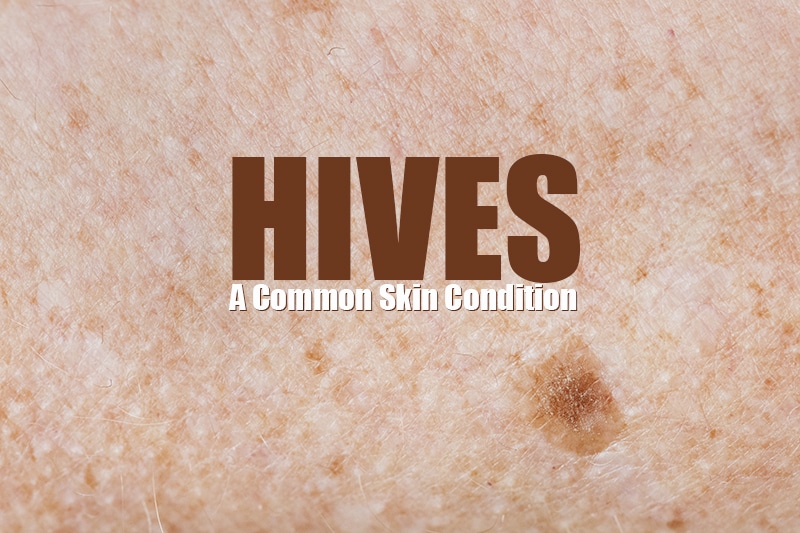Regarded as a serious skin reaction, hives cause itchy, raised welts on the skin. Also known as urticaria, these itchy welts are red, pink, or flesh-colored. Often, these welts start as itchy patches that turn into swollen welts that vary in size. These welts appear and fade at random as the reaction runs its course. In most cases, hives occur due to an allergic reaction to a medication or food or a reaction to an irritant in the environment. While reporting hives diagnosis and treatment on claims, it is crucial to ensure thorough documentation and assign the correct ICD-10 codes. Physicians can rely on professional medical billing services to accurately report the condition on the medical claims and receive maximum reimbursement.
What Causes Hives?
Hives can be either acute (temporary) or chronic (ongoing). Acute (temporary) hives can be alleviated with allergy medications. On the other hand, chronic (ongoing) hives may be accompanied by a severe allergic reaction that can be very uncomfortable and interfere with sleep and daily activities. As mentioned above, hives are usually caused by an allergic reaction to something that a person may have swallowed. When it comes to allergens, hives can be caused by factors such as pollen, medications, food, animal dander, and insect bites. This skin condition may also occur as the result of excessive exposure to hot or cold temperatures or from irritation due to excessive sweating. In short, as there are several potential triggers, in several cases the cause of hives cannot be correctly determined.
Symptoms and Treatment
Welts that appear on the skin are one of the most noticeable symptoms associated with hives. These may be red in color, but can also be the same color as your skin. They can be either small and round, ring-shaped, or large and of random shape. Hives can be itchy and tend to appear in batches on the affected part of the body. They can grow larger, change shape, and spread. Other related symptoms include –
- Batches of welts (wheals) that can arise anywhere on the body
- Welts that vary in size, change shape, and appear and fade repeatedly
- Itchiness (pruritus)
- Painful swelling (angioedema) around the eyes, cheeks or lips
- Flares triggered by heat, exercise or stress
In certain cases, symptoms persist for more than six weeks and recur often and anytime, sometimes for months or years. Hives may disappear or reappear over the course of the outbreak.
Diagnosis of hives may involve an examination of the skin that will show signs of the welts associated with the condition. Dermatologists may also perform blood tests or skin tests to determine what symptoms may have caused hives (particularly if the condition is the result of an allergic reaction). Patients experiencing mild cases of hives (not related to allergies or other health conditions) may not need prescription treatment. In such cases, dermatologists may seek temporary relief by taking antihistamines (such as diphenhydramine or cetirizine), avoiding irritating the area and avoiding hot water, which may aggravate the condition. In addition, other self-care strategies such as avoiding triggers, wearing loose, smooth-textured cotton clothing, tracking the symptoms, protecting the skin from the sun and applying an anti-itch cream or lotion – can also help prevent hives.
Although hives can be itchy and uncomfortable, they are not severe and will disappear after a period of time. However, it is important to note that some hives go away, and new ones may pop up. Mild cases of hives are considered harmless. However, hives can prove to be dangerous if a person is having a serious allergic reaction. In such cases, prompt treatment for a severe case of hives is important for a good outlook.
ICD-10 Codes for Hives
Dermatologists treating patients with hives can rely on the services of professional medical billing companies for correct documentation of this condition. The ICD-10 codes for hives are listed below –
-
- L50 Urticaria
- L50.0 Allergic urticaria
- L50.1 Idiopathic urticaria
- L50.2 Urticaria due to cold and heat
- L50.3 Dermatographic urticaria
- L50.4 Vibratory urticaria
- L50.5 Cholinergic urticaria
- L50.6 Contact urticaria
- L50.8 Other urticaria
- L50.9 Urticaria, unspecified
- L50 Urticaria
Incorporating simple lifestyle changes may help prevent hives from reoccurring in the future. Patients who have allergies need to identify which substances are likely to cause an allergic reaction. In such cases, dermatologists will ask patients to avoid any possible exposure to these factors. Allergy shots are another option that may help patients reduce the risk of experiencing hives again. Patients need to avoid being in high-humidity areas or wearing tight clothing if they have recently suffered a hives outbreak.
Medical billing and coding for hives can be complex, as there are several codes associated with the condition. By outsourcing these tasks to a dermatology medical billing company that provides the services of AAPC-certified coding specialists, healthcare practices can ensure correct and timely claim submission for optimal reimbursement.




